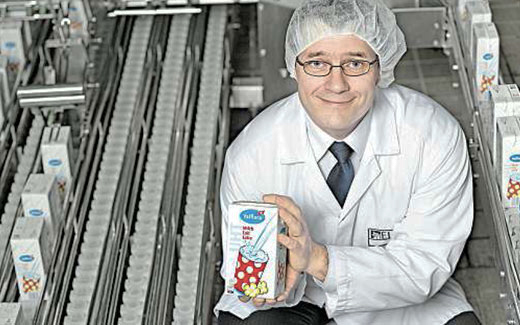
Product Casings under Scrutiny
Migros is gradually coming closer to its target of reducing the environmental footprint of its most frequently used packagings by 10% by 2013. In 2011 the retailer exceeded its reduction target.
Packagings protect their content from perishing or damage. To ensure this key function in as green a way as possible, Migros approved a packaging guideline in 2009 and set itself the target of reducing the environmental footprint of the packaging of the 250 most frequently sold products by 10% by 2013. The retailer is currently reviewing its entire range and making optimisations where possible. In doing so, Migros reached its interim goals last year. It also reduced the environmental footprint of packaging of less frequently sold items. The packaging specialists made particular progress in the food and fish areas. In the non-/near-food area and in the specialist retail centres, improvements were more difficult to implement, in particular for the most frequently sold products.
Key packaging materials verified
Before packaging material is replaced or re-used, specialists calculate life cycle assessments. These assessments record the environmental impact during the entire life cycle, from raw material extraction to production and transport through to disposal. In 2011 Migros examined bottles and tins made from aluminium, glass and plastic and drink cartons, such as Tetrapak®. The life cycle assessments showed that raw material extraction puts the greatest strain on the environment as a rule. With the exception of glass, transports are of a subordinate significance. Bioplastics, which promise a neutral carbon footprint and are therefore found ever more frequently in the market, were also examined. The results of the Migros life cycle assessments show that the new kind of plastics made from renewable commodities like maize, sugar cane and other plants do not meet expectations and even increase the environmental footprint. Furthermore, different bioplastics compete with food cultivation.
Tonnes of packaging materials saved
In accordance with a Migros-internal directive, there are five strategies as a rule to reduce the environmental footprint of packaging: do away with outer packaging, minimise the thickness of packaging wrappers, use green materials, use recycling materials or an alternative packaging type. In 2011 Migros achieved raw material savings of 60 tonnes of PET for food and fresh produce, for instance, by adding 30% of recycling PET to bottles of pure fruit juices. Migros saves three tonnes of plastic per year by doing without the plastic cups for the packaging of peppers. And for UHT milk cartons, the retailer has switched to FSC: some 120 million milk cartons per year will bear the FSC label as of 2012. Such changes to packaging are hardly visible to Migros customers, but they improve products' life cycle assessments considerably.